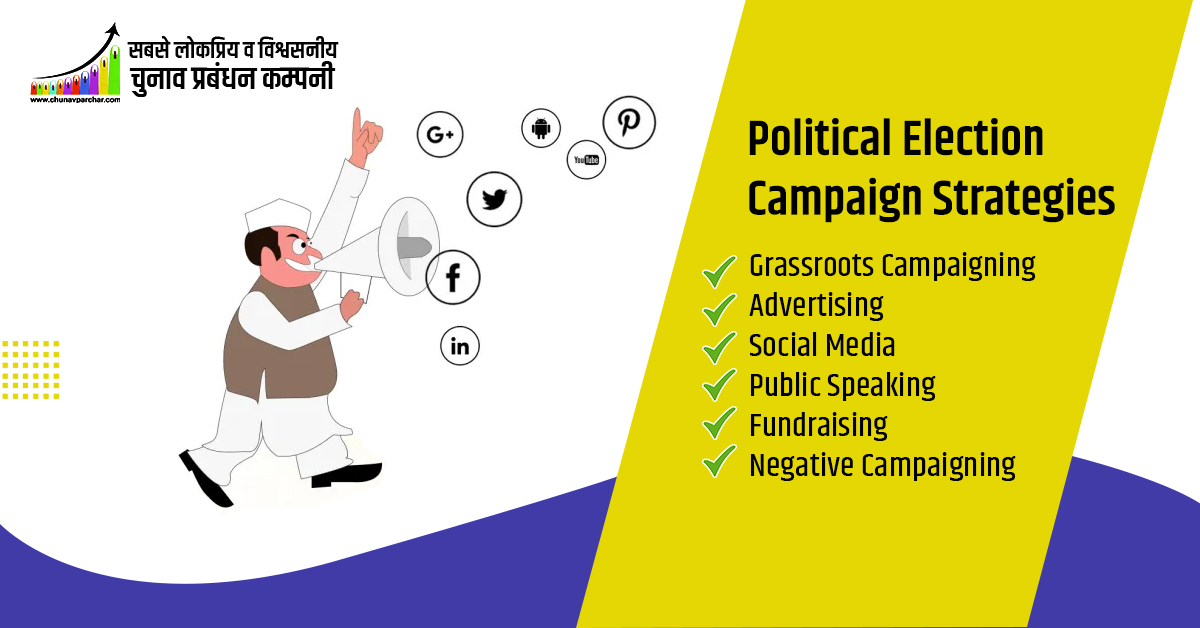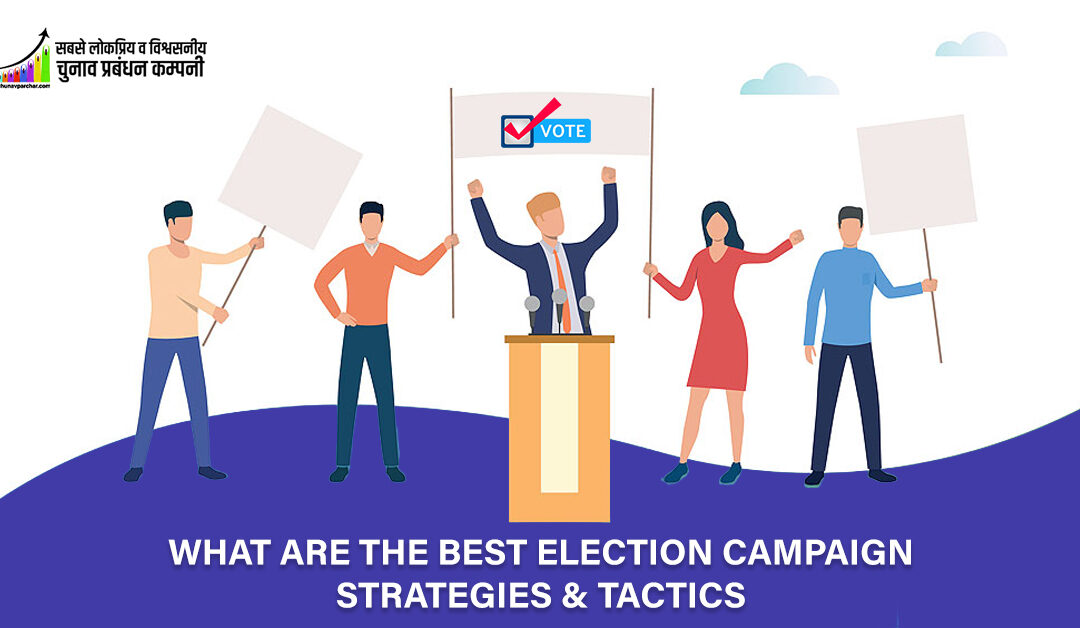An election campaign is an organized effort by a political party or candidate to secure votes in an upcoming election. The strategies and tactics employed in an election campaign can vary greatly depending on the type of election, the intended audience, and the resources available. However, there are certain tried-and-true strategies which can be employed regardless of these conditions. These may include organizing rallies, conducting polls and surveys, engaging in digital advertising campaigns, creating print materials or maintaining a presence on social media.
When choosing which strategies and tactics to employ in an election campaign, it is important to take into account the type of election. For example, a local election campaign will differ greatly from a presidential election campaign. The former will require a more targeted approach, whereas the latter will require a much broader approach.
The intended audience is another important consideration. For example, a campaign aimed at young voters will employ different strategies and tactics than a campaign aimed at senior citizens. It is important to tailor the campaign to the target audience in order to be effective.
Finally, the available resources must be taken into account. A candidate with limited financial resources will have to focus on more cost-effective strategies, such as conducting polls and surveys or maintaining a presence on social media. A candidate with more resources will be able to employ a wider variety of strategies, such as organizing rallies or conducting digital advertising campaigns.
Despite the many factors to consider when developing an election campaign strategy, there are certain tactics which can be employed regardless of the type of election, intended audience, or resources available. These may include:
Political Election Campaign Strategies

Political election campaign strategies are the methods and techniques used by political candidates and their teams to communicate their message, build their brand, and persuade voters to support them. Here are some common strategies:
- Grassroots Campaigning: This involves mobilizing volunteers to go door-to-door, make phone calls, and distribute campaign materials to individual voters in their communities. The aim is to build personal connections with voters and persuade them to support the candidate.
- Advertising: Political campaigns may use various forms of advertising, including television, radio, online ads, and billboards to reach a wider audience. Ads may focus on the candidate’s policy positions or highlight their personal qualities.
- Social Media: Social media platforms such as Facebook, Twitter, and Instagram are increasingly used by political campaigns to engage with voters and build support. Candidates may use social media to share updates, post videos, and respond to voter questions and comments.
- Public Speaking: Candidates may participate in rallies, debates, and town hall meetings to directly address voters and present their vision for the country. This is an opportunity for candidates to demonstrate their speaking skills and connect with voters on a personal level.
- Fundraising: Running a successful campaign requires significant financial resources. Candidates may hold fundraising events, reach out to donors, or use crowdfunding platforms to raise money for their campaign.
- Negative Campaigning: Some political campaigns may use negative tactics to discredit their opponents and sway voters away from them. This may involve attack ads or spreading rumors and misinformation about opponents.
Political Election Campaign Tactics
Political Election Campaigns can take many forms and employ a range of tactics to persuade voters to support a particular candidate or party. Here are some common tactics that campaigns use:
- Advertising: This includes TV and radio ads, billboards, and online ads. Ads can be used to introduce a candidate to voters, highlight their policy positions, or attack their opponents.
- Door-to-Door Canvassing: Campaign workers go door-to-door in neighbourhoods to talk to voters about the candidate and their platform. This tactic can be effective for building personal connections with voters and gathering information about their concerns.
- Voter Registration Drives: Campaigns may run voter registration drives to encourage people who are not registered to vote to sign up.
- Phone Banking: Volunteers or campaign staff call voters to ask for their support or remind them to vote.
- Social Media: Campaigns use social media platforms to reach voters and share information about their candidate. Social media can be especially effective for mobilizing younger voters.
- Debates: Candidates participate in debates to discuss their policy positions and show their knowledge and expertise on issues. Debates can be an opportunity to reach a large audience and demonstrate leadership qualities.
- Fundraising Events: Candidates hold fundraising events to raise money for their campaign. These events can range from small house parties to large rallies.
- Endorsements: Campaigns may seek endorsements from well-known individuals or organizations to lend credibility to their candidate.
- Negative Campaigning: This involves attacking opponents’ records or personal characteristics. Negative campaigning can be controversial, but it can also be effective in swaying undecided voters.
- Get-out-the-vote Efforts: Campaigns run efforts to encourage their supporters to vote on election day. This can include phone banking, sending reminders through social media, and providing transportation to polling stations.
Here are a few Blog ideas for a Political Election Campaign Consulting Firm:
The best election campaign strategies and tactics depend on several factors, such as the nature of the election, the target audience, and the available resources. However, here are some commonly used and effective strategies and tactics:
- Define Your Message: Develop a clear and concise message that resonates with your target audience. Focus on the issues that matter most to them.
- Build a Strong Team: Surround yourself with a team of experienced and dedicated professionals who can help you execute your campaign plan effectively.
- Use Data-Driven Targeting: Use voter data to identify and target specific groups of voters who are most likely to support your campaign.
- Leverage Social Media: Use social media platforms to communicate with voters, share your message, and mobilize your supporters.
- Run Effective Advertising: Develop and run effective advertising campaigns on traditional media (e.g., TV, radio, newspapers) and digital media (e.g., social media, email).
- Organize Events: Organize events that allow you to interact with voters, answer their questions, and share your vision for the future.
- Engage With the Community: Build relationships with community leaders, interest groups, and other stakeholders to gain their support and endorsement.
- Use Volunteers: Mobilize volunteers to help with canvassing, phone banking, and other campaign activities.
- Get Out the Vote: Develop a robust get-out-the-vote strategy to ensure that your supporters turn out to vote on Election Day.
- Monitor and Adapt: Monitor the effectiveness of your campaign strategies and tactics and be prepared to adapt as necessary to respond to changing circumstances.
In this blog post, we will examine some of the best election campaign strategies and tactics. We will also look at some of the most common mistakes that campaigns make. By the end, you will have a better understanding of how to run a winning campaign. Overall, a successful election campaign requires careful planning, effective execution, and the ability to adapt to changing circumstances. By using a combination of these strategies and tactics, you can increase your chances of success in your campaign.

